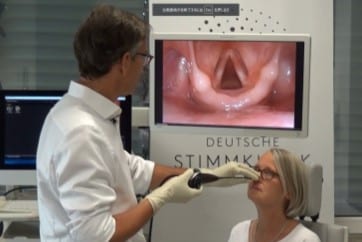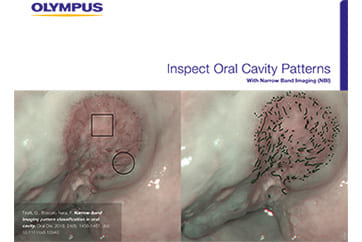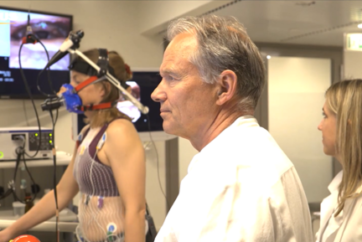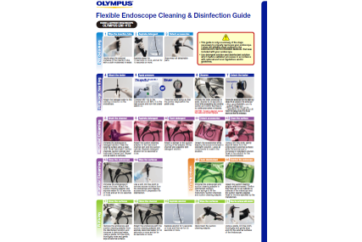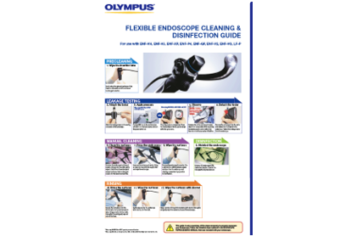Examination of Children
General Remarks
There are various settings in which children may be examined.
The most suitable setting will depend on the child’s age and ability to cooperate.
Rigid endoscopy can only be performed when the child is cooperative, it is seldom possible in babies and toddlers.
There are big differences in children’s ability to cooperate.
Flexible endoscopy can be performed at any age, provided that the child may be held in a controlled position during the examination.
In our experience, flexible endoscopy without immobilizing the child can often be performed from the age of 4–6 years and upwards.
In our experience, rigid endoscopy can often be performed in children from the age of 6–8 years and upwards.
For rigid endoscopy, a 70° endoscope is most suitable due to the superior cervical position of the larynx.
In neonates and babies, flexible endoscopy can be performed with the baby sitting or lying and it is possible to perform a transnasal or transoral endoscopy. However, when small children have teeth they might bite on the flexible endoscope. In this case use transnasal access.
In babies it often takes time to see the vocal folds and to assess their mobility because of the superior, anteriorly tilted arytenoid complex. Keep the endoscope tip positioned at the level of the uvula until you have seen enough.
When examining a baby in a sitting position, the baby should sit upright and not half-lying. It is important to view the larynx from above and not from an anterior-superior angle – you will not see the vocal folds from the latter position.
Important:
Video recording is highly recommended for subsequent off-line analysis and archiving a full record!
For transnasal flexible endoscopy use topical local anesthetic in the nasal cavity (preferably using anesthetic gel for application).
Keep calm and do not fight with or bully the child.
Explain to the parents that the examination – particularly when using the small flexible endoscope (diameter <2 mm) – does not hurt, but that the child has to be held in a controlled manner in order to prevent wriggling.
The less the child moves the less it will be affected by the endoscope.
Give precise instructions to the parents about the best way to hold the child so they feel safe even though their movement is restricted.
Transoral Rigid Endoscopy of Children
Immobilizing a child is unhelpful for rigid endoscopy. However, holding them may offer some reassurance. To distract the child, involve them in the procedure. Have the child do something Ú e.g. holding their tongue with a gauze square.
Ask the child to pant during the examination.
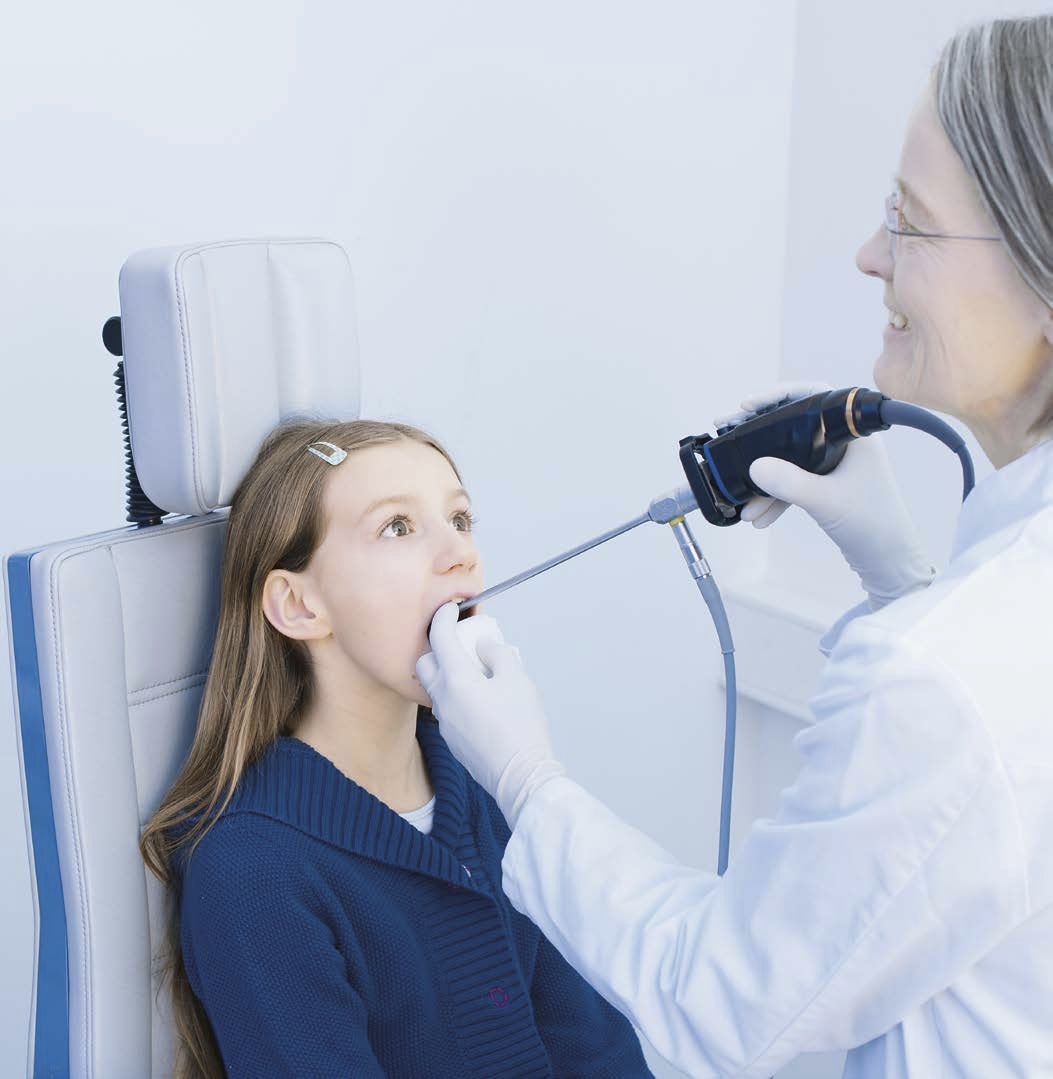
Transnasal Flexible Endoscopy of Children
For better visualization of the setting, the examiner holds the endoscope like a left-handed examiner.
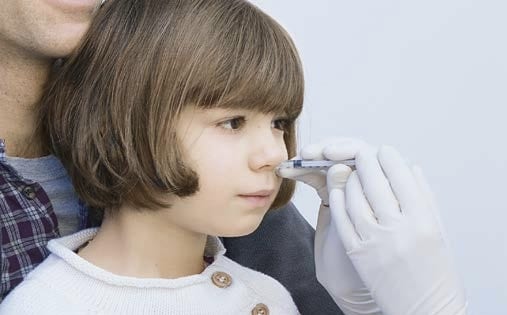
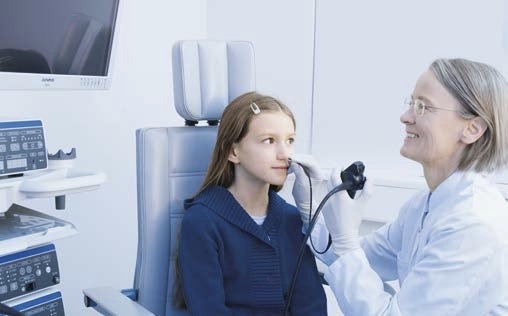
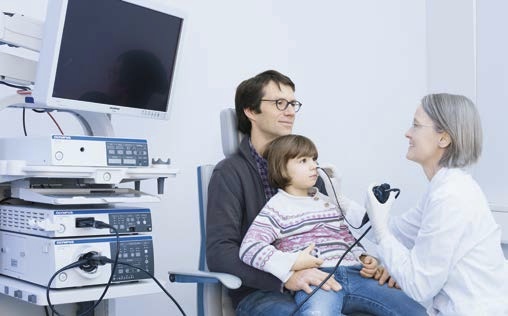
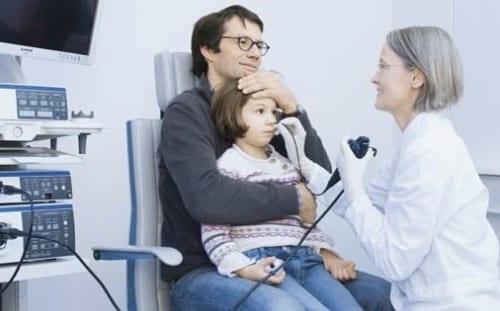
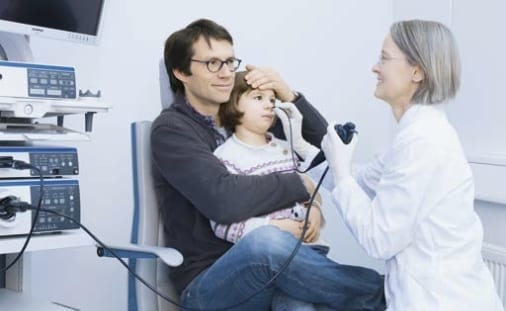
Transnasal and Transoral Endoscopy of Babies (Flexible and Rigid)
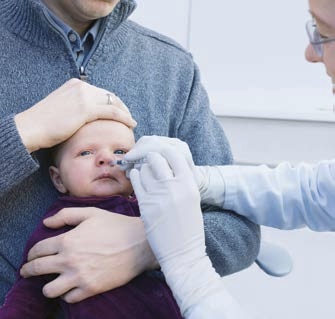
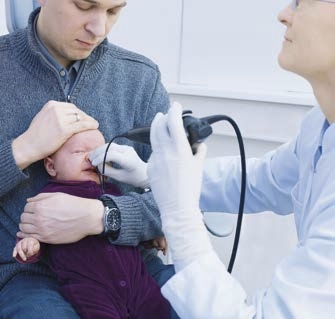
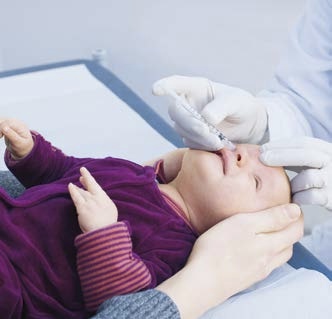
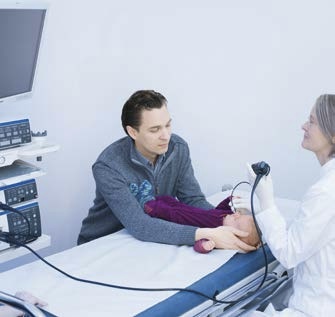
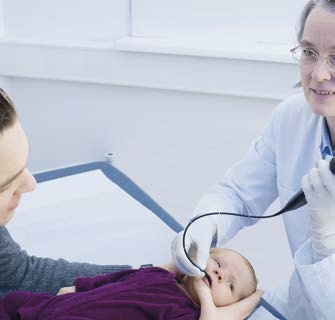
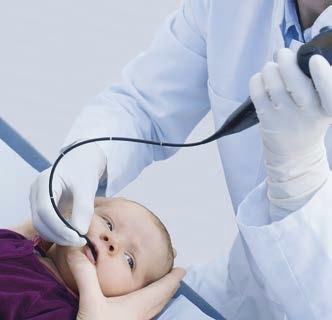
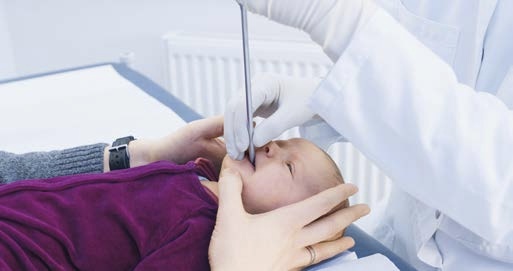
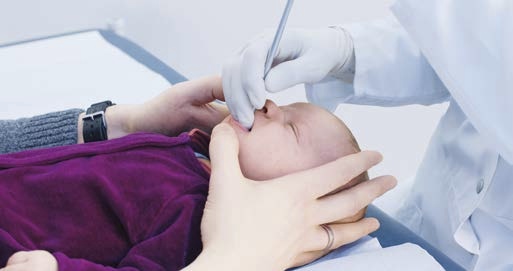
- Content Type

